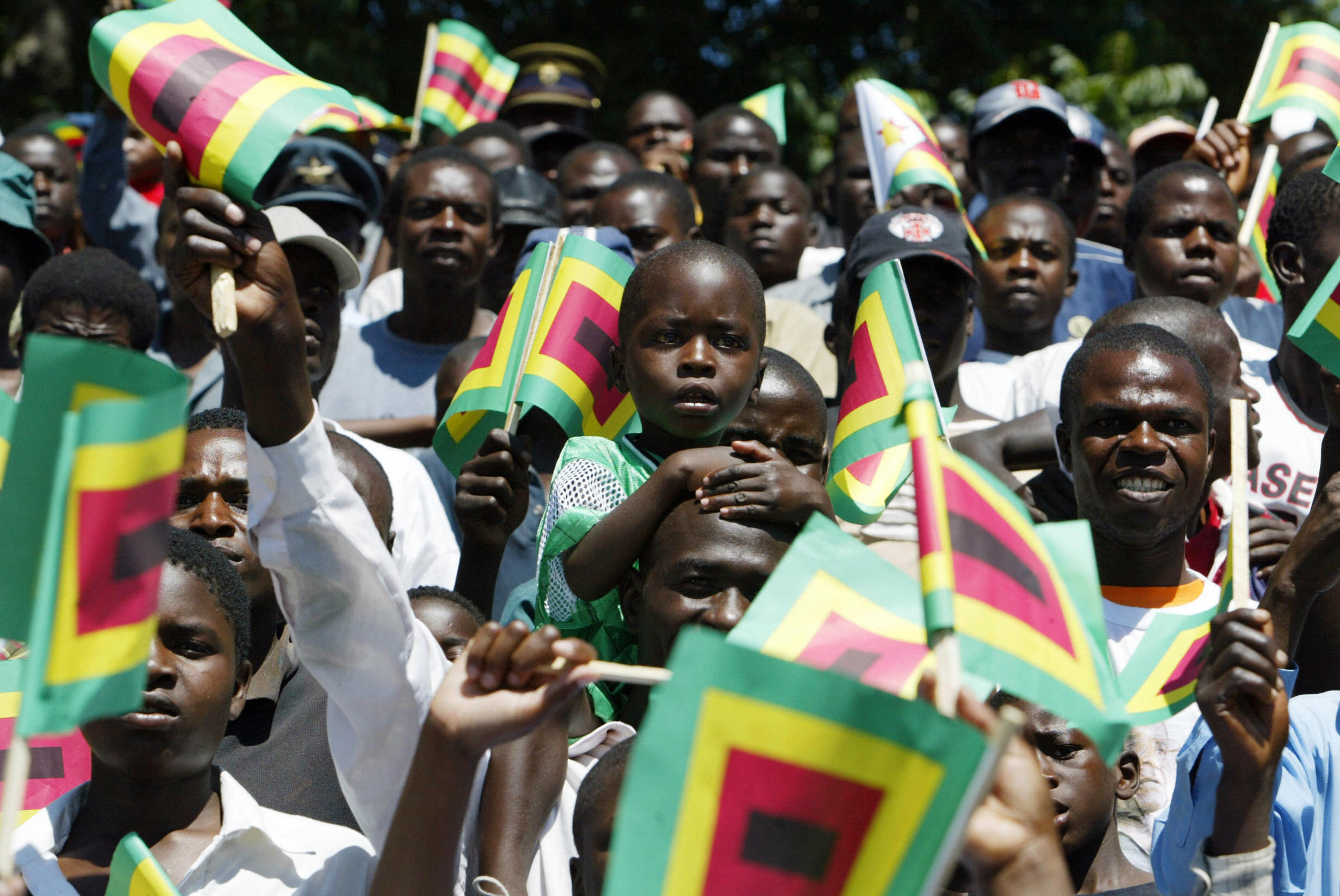Zimbabwe Struggle for Independence and Triumph: Recognise the Pivotal History of Independence and Resilience
- 1 The Colonial Era – Edu Africa: Foundations of Conflict and Struggle for Independence
- 2 2. The Liberation Struggle: The Second Chimurenga
- 3 3. The Early Years of Independence Day: Hope and Challenges in the Fields of History
- 4 4. The Land Reform Crisis, Oppression, and Economic Decline
- 5 5. The Post-Mugabe Era: A New Chapter for Zimbabwe
- 5.1 Key Developments in the Post-Mugabe Era: Zimbabweans from Across the Globe
- 5.2 The Spirit of Resilience: Zimbabwe on JSTOR (Journal of Southern African Studies)
- 6 Conclusion: Zimbabwe’s Legacy of Struggle and Triumph – Future Generations
Zimbabwe’s history is of adversity, tenacity, and the country’s fight for independence. From Zimbabwe’s colonial origins under British authority to the liberation war that resulted in its independence in 1980, the government has faced many difficult obstacles and accomplished many notable victories. The bravery of the nation’s citizens, who battled against injustice, inequality, and economic suffering, molded the country’s path to freedom. Join moreeeglory.com as we examine the turning points in Zimbabwe’s independence movement, the difficulties encountered in the post-colonial era, and the resilient spirit that has defined the country for so long.
The Colonial Era – Edu Africa: Foundations of Conflict and Struggle for Independence
Zimbabwe, also referred to as Southern Rhodesia as it was known back in history, is located in Africa and was occupied by the Europeans towards the end of the nineteenth century. This period in Zimbabwe was characterized, in varying degrees, by colonialism spearheaded by Cecil Rhodes and the British South Africa Company, which essentially was marked by resource appropriation and destruction of the Indigenous peoples’ way of life. This served as a springboard for the several decades of racism and economic imbalances that followed, instigated by foreign rule.
Key Transformative Features of the Colonial Period:
- Land Dispossession: One of the main points of contention during colonialism was the widespread dispossession of land to the benefit of the white colonizers. As a minority of the settler African population, the white settlers comprised the farming regions. At the same time, many black Africans migrated into overcrowded reserves that had little farming land.
- Racial Segregation and Discrimination: All facets of life in Africa, including education, employment, politics, and other aspects, were well controlled and manipulated by the colonial government to render black Zimbabweans ineffective. There were legal restrictions wherein the provision for primary health care or education, for that matter, was constrained by the color bar.
- Resistance Movements: Apart from the latter protests, the colonization of Zimbabwe attracted resistance from Zimbabweans. The First Chimurenga War of Socio-Political Deconstruction. Abbreviations are inappropriate; shortcuts in writing happen among the Shona and Ndebele who revolted against the British army in 1896. The insurgency was put down but gave way to a more discernible form of resistance.
2. The Liberation Struggle: The Second Chimurenga
The 1960s and 1970s saw a heightened nationalist push for Zimbabwe’s independence as a means of overthrowing the country’s white minority government. The Second Chimurenga, sometimes called the Rhodesian Bush War, was an extended guerrilla conflict between Ian Smith’s Rhodesian government and liberation groups.
Key Players in the Liberation Struggle Herald:
- ZANU and ZAPU: The main self-determination and national movements, the Zimbabwe African National Union, led by Robert Mugabe, and the Zimbabwe African People’s Union, led by Joshua Nkomo, claimed independence. There were also military divisions known as ZANLA and ZIPRA, which performed guerrilla operations against Rhodesia’s forces.
- Guerrilla Warfare: With the aid of local populations cut off from significant support within the countryside, particularly in Rhodesia, the liberation forces resorted to unconventional tactics such as ambush, sabotage, and hit and run to bring down the government.
- International Sanctions and Support: Internationally, the Smith regime was under the scorn of other nations, and the United Nations imposed economic sanctions against the former Rhodesia. At the same time, liberation movements turned help to the Soviet and Chinese socialists and other African countries that supported and sympathized with them.
The Road to Independence: Breaking News
- Lancaster House Agreement: The liberation war ended with the Lancaster House agreement being signed in 1979 after years of combat. This peace treaty signed in London provided for the cessation of civil war and prepared the ground for the democratic process in Zimbabwe.
- Elections and Victory: In 1980, the country instigated multi-racial polls for the first time in its history, and Robert Mugabe and his ZANU-PF party emerged victorious. April 18, 1980, marked Zimbabwe’s independence and signified the demise of nearly a century of Colonialism.
3. The Early Years of Independence Day: Hope and Challenges in the Fields of History
A sense of optimism marked the early years of independence and hope for a new beginning. The new government focused on nation-building, reconciliation, and addressing the socio-economic disparities created by colonial rule. However, Zimbabwe’s journey was not without its challenges.
Post-Independence Reforms:
- Land Redistribution: Addressing the land question was one of the most pressing issues for the new government. Land reform programs were initiated to redistribute land from white commercial farmers to landless black Zimbabweans. However, the process was slow, constrained by limited resources and international funding.
- Education and Health Improvements: The government significantly invested in education and healthcare, expanding access to previously marginalized communities. Literacy rates improved dramatically, and primary education was made accessible, laying the foundation for a more educated population.
- Economic Growth and Stability: In the first decade after independence, Zimbabwe experienced economic growth driven by agricultural production, mining, and manufacturing. The country became known as the breadbasket of Africa, with a diversified economy and a relatively high standard of living.
Emerging Ideological Challenges:
- Political Tensions: Despite initial efforts at reconciliation, political tensions simmered between ZANU and ZAPU, culminating in the Gukurahundi conflict in the early 1980s. The conflict, marked by violence in the Matabeleland region, left thousands dead and strained national unity.
- Economic Difficulties: By the late 1990s, Zimbabwe’s economy began to falter, and it was affected by high inflation, unemployment, and a rising national debt. Corruption, mismanagement, and a lack of investor confidence further exacerbated the country’s economic woes.
4. The Land Reform Crisis, Oppression, and Economic Decline
The turn of the 21st century saw Zimbabwe’s land reform take a dramatic and controversial turn. In 2000, the government embarked on a fast-track land reform program that involved the seizure of white-owned commercial farms without compensation. While the program aimed to redress historical injustices, it also led to significant economic and social upheaval.
Impact of Land Reform:
- Agricultural Decline: The abrupt land redistribution led to a sharp decline in agricultural production, as many new landowners lacked the resources and expertise to maintain commercial farming operations. Zimbabwe’s status as a food-secure nation quickly deteriorated, resulting in widespread food shortages.
- Hyperinflation and Economic Collapse: The economic fallout from the land reforms was severe. Zimbabwe experienced hyperinflation, peaking at an unimaginable 89.7 sextillion percent in 2008. The national currency became virtually worthless, and millions of Zimbabweans were impoverished.
- International Isolation: The land reforms, along with allegations of human rights abuses and electoral fraud, led to Zimbabwe’s isolation from the international community. Sanctions were imposed by Western countries, further weakening the economy and limiting access to foreign aid and investment.
Resilience and Citizenship in the Face of Adversity:
- Coping Strategies: Despite the economic hardships, Zimbabweans demonstrated remarkable resilience. Many turned to informal trading, cross-border commerce, and remittances from the diaspora to survive. The spirit of entrepreneurship flourished as individuals sought new ways to adapt to the challenging economic environment.
- Dollarization and Stabilization: In 2009, Zimbabwe abandoned its currency in favor of the US dollar and other foreign currencies. This move helped stabilize the economy, controlling inflation and restoring normalcy to everyday life.
5. The Post-Mugabe Era: A New Chapter for Zimbabwe
In 2017, Robert Mugabe’s nearly four-decade rule ended following a military intervention that led to his resignation. His successor, Emmerson Mnangagwa, promised a new era of economic reform, political openness, and re-engagement with the international community. However, the road to recovery has been fraught with challenges.
Key Developments in the Post-Mugabe Era: Zimbabweans from Across the Globe
- Economic Reforms and Challenges: The government has introduced measures to revive the economy, including efforts to attract foreign investment, streamline regulations, and address corruption. However, economic growth has been slow, and the country grapples with high unemployment, power shortages, and a struggling currency.
- Calls for Political Reform: Zimbabwe’s political landscape remains contentious, with calls for more significant democratic reforms, respect for human rights, and fair electoral processes. The government faces pressure from domestic and international actors to ensure political stability and accountability.
The Spirit of Resilience: Zimbabwe on JSTOR (Journal of Southern African Studies)
- Civic Engagement and Activism: Zimbabweans continue to push for change through civic engagement, activism, and social movements. The youth, in particular, have become increasingly vocal, using digital platforms to advocate for their rights and hold leaders accountable.
- Hope for the Future: Despite the ongoing challenges, there is hope for Zimbabwe’s future. The country’s natural resources, educated workforce, and vibrant culture provide a strong foundation for potential recovery and growth. With sustained efforts at reform and investment in the well-being of its people, Zimbabwe can reclaim its place as a resilient and prosperous nation.
Conclusion: Zimbabwe’s Legacy of Struggle and Triumph – Future Generations
Zimbabwe’s history is a testament to the enduring spirit of its people, who have navigated the complexities of colonialism, fought for their freedom, and faced the challenges of nation-building with courage and resilience. From the liberation struggle to the economic crises of the post-colonial era, Zimbabweans have shown an unwavering commitment to their nation’s sovereignty and progress.
As Zimbabwe continues to confront its present challenges, the lessons of the past serve as a guide for the future. By honoring the sacrifices of those who fought for independence and embracing the resilience that defines the Zimbabwean spirit, the country can chart a path toward renewal, unity, and a brighter tomorrow.

















